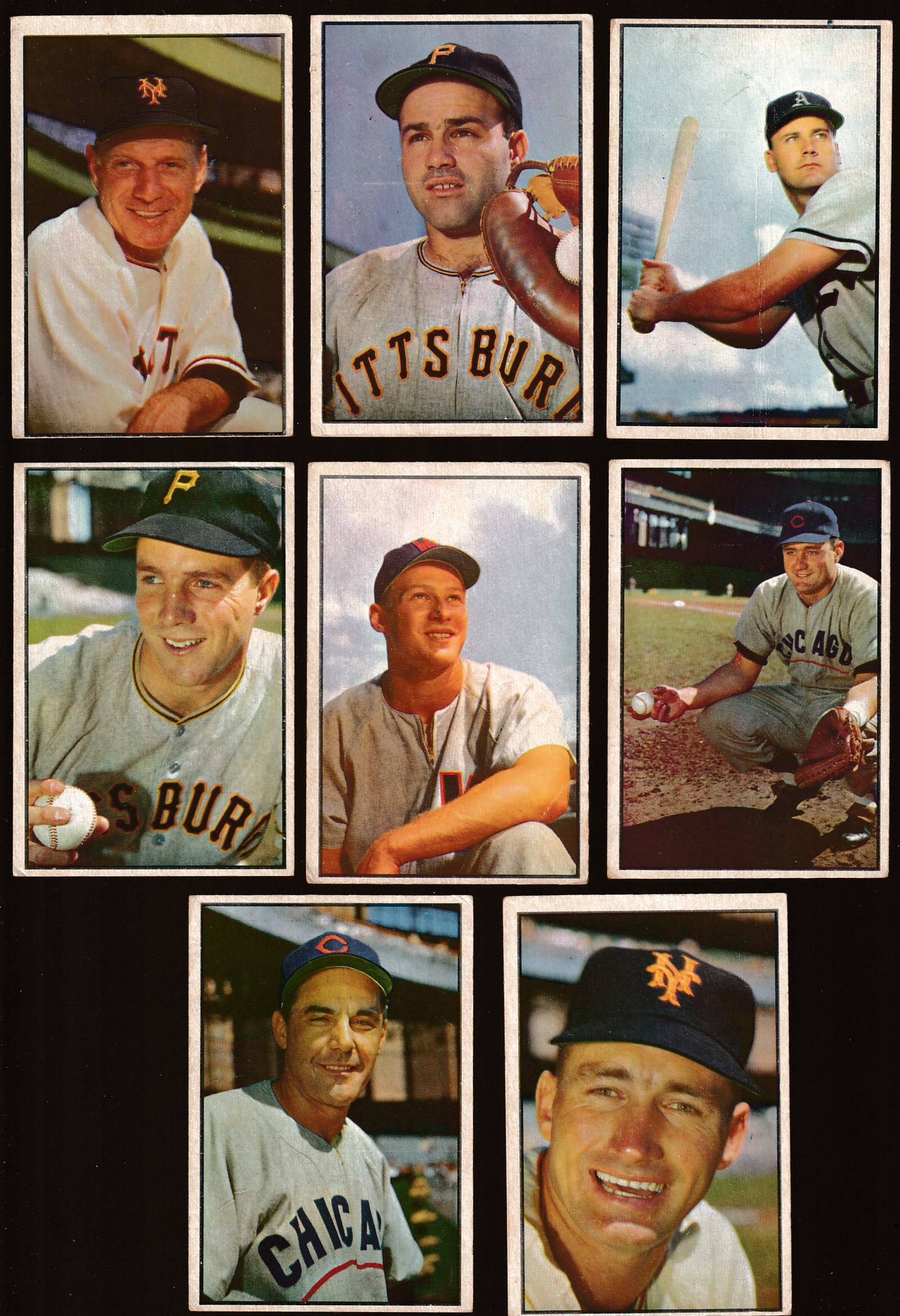Below are short bits & pieces on sportscard & baseball trading card collecting.
Please wander around the website for more info, prices, values & images
on vintage baseball, football, basketball, hockey, sport and non-sports cards.

1971 Kellogg's
1971, Kellogg's second and by far scarcest and most valuable set,
contained 75 different players on 2 ¼” by 3 ½” cards.
The cards were plastic coated giving them a 3-D look !!!
The plastic coating also made high grade cards nearly impossible find.
Over time and the elements, most cards would curl making light and heavy
cracks very common.
As opposed to Kellogg's other issues which were available from the company as complete sets,
1971 Kellogg's cards were ONLY available one in each specially marked box of Kellogg's cereal.
The only way to complete your 1971 Kellogg's set was to pester mom to buy, buy, buy more boxes of cereal.
In addition to the 75 different players, numerous scarcer variations exist
with minor differences in the stats on back. In addition, all 75 cards and
some variations are found with 2 different forms of copyright on the back:
XOGRAPH ( 80 total cards)
@1970 XOGRAPH (121 total cards)
The numbers above may not be 100% accurate.
The "toughest" cards appear to be:
# 7 Alou (1970 Oakland NL)
# 28 Wright (Angles Crest Logo)
# 54 Johnson (Angles Crest Logo)
# 64 Fregosi (Angles Crest Logo)
# 70 Osteen (No Number on back)
# 2 Seaver (ERA 2.81)
# 41 Gaston (113 Runs)
# 65 Rose (RBI 485)
|

Ways to sell your baseball cards
2 reasons auctions are popular way to sell vintage sports cards.
#1 Desirable items tend to get top dollar (or better !)
#2 Everything goes
... This can be good - Everything gone, happy with final total
... or can be very bad - Everything gone, but at super low prices
OTHER WAYS TO SELL YOUR CARDS
•eBay Buy-it-Now •card store •swap meet
•Craigslist •garage/yard sale
or •DONATE to a charity for tax write-off
Not selling but perhaps easiest with possible $$$ return.
ASSUMPTIONS:
#1) You are one of the RARE tax payers left in America
#2) You have mostly late 80's & 90's "junk"
Consider donating the "junk" and keep better stuff to sell later.
Tax deduction was based on LESSER of "what-it-cost" & "What-it's-Worth".
For "What-it's-Worth", I use Beckett which can be higher than what you paid.
Check with your tax guy.
Cut/Paste TurboTax discussion link below:
https://ttlc.intuit.com/questions/3372284-are-trading-card-donations-deductible-if-so-how-much
Possible Charities for Donations
•Goodwill •Salvation Army •Cerebal Palsy
•Children's Hospitals •Cubs scout troops
...or an online charity
•Cards 2 Kids •Commons4Kids.org •CollectiblesWithCauses.org
Verify all "charities " before donating.
|

1960 Nu-Card Baseball Hi-Lites
Checklist & Prices
This 72-card set of large (3-1/4" x 5-3/8") cards called 'Hi-Lites'
featured baseball highlights. Printed in red and black, card
fronts resembled a newspaper front page.
Backs featured trivia question (with answer) sending you to a card
with more info.
Rare cards #1-18 can be found blank-backed with just black printing.
In 2 months on eBay, NONE of nearly (200) 1960 Nu-Cards listings were
black only ! Other than #1 Ruth, black only cards are nearly identical
differing only in print color and copyright.
Note: You may be on that page now.
Click for complete
1961 Nu-Card Baseball Scoops checklist & prices
|

Tobacco Cards
Starting approximately in 1886, sportscards, mostly baseball cards, were often
included with tobacco products, for promotional purposes and also because the
card reinforced the packaging and protected cigarettes from damage. These sports
cards are referred to as tobacco cards in the baseball card hobby. Over the next
few years many different companies produced baseball cards. Tobacco cards soon
started to disappear as the American Tobacco Company tried to develop a monopoly
by buying out other companies.
They were reintroduced in the 1900s, as American Tobacco came under pressure from
antitrust action and Turkish competition. The most famous and most expensive,
baseball card is the rare T206 Honus Wagner. The card exists in very limited
quantities compared to others of its type because Wagner forced the card to be
removed from printing. It is widely (and incorrectly) believed that Wagner did
so because he refused to promote tobacco, but the true explanation lies in a
dispute over compensation.
Soon other companies also began producing baseball and football cards. Sports magazines
such as The Sporting News were early entries to the market. Candy manufacturers
soon joined the fray and reflected a shift toward a younger target audience for cards.
Caramel companies were particularly active and baseball cards were one of the first
prizes to be included in Cracker Jacks. World War I soon suppressed baseball card
production.
© 1995-2019 "InterNet's Baseball Card Store" / Joseph Juhasz ... All Rights Reserved
|








